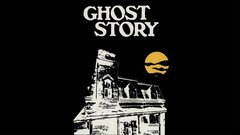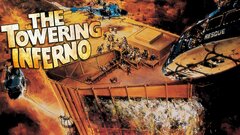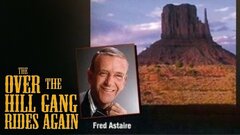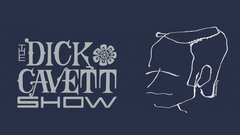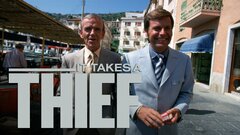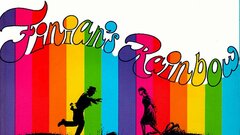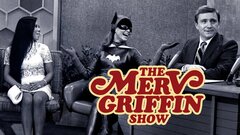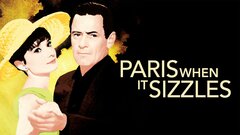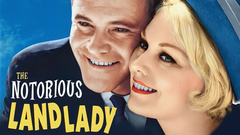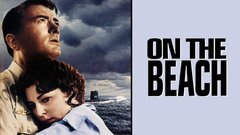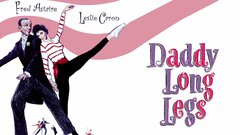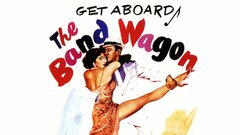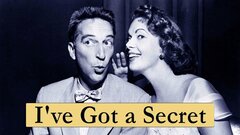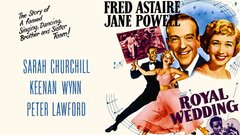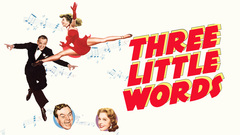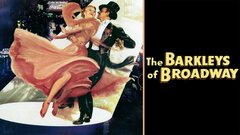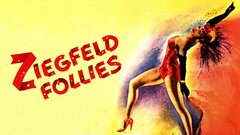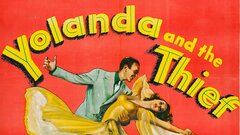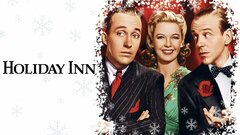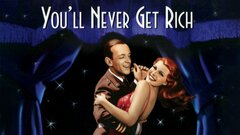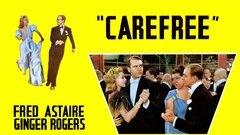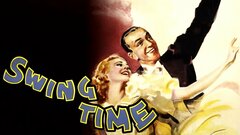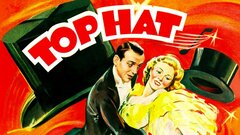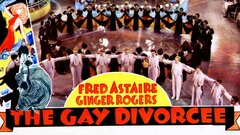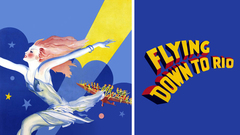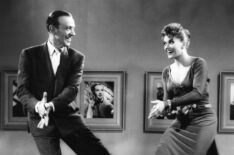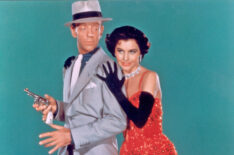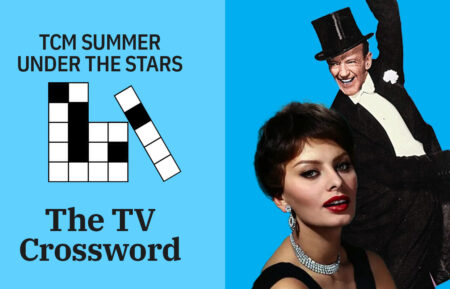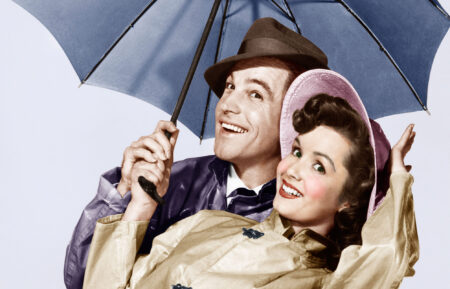With his older sister and dance partner Adele, vaudeville performer Fred Astaire became the toast of Broadway during the Jazz Age while partnering with composers George and Ira Gershwin to redefine American musical theatre. After Adele's retirement in 1931, Astaire tried his luck in Hollywood, pairing with Ginger Rogers at RKO for a total of 10 films, including "Top Hat" (1935), "Follow the Fleet" (1936) and "Shall We Dance?" (1937). A self-punishing perfectionist, Astaire hid his torturous process behind a mask of suave self-composure. The Astaire-Rogers films proved a tonic for an anxious nation during the Great Depression.
In later years, Astaire would take to the dance floor with a number of new partners, among them Eleanor Powell and Rita Hayworth, while also playing second banana to crooner Bing Crosby in the musical comedies "Holiday Inn" (1942) and "Blue Skies" (1946). Coaxed out of retirement for MGM's "Easter Parade" (1948), Astaire went on to headline "Royal Wedding" (1951), in which he danced seemingly weightless on walls and ceilings, and "The Band Wagon" (1953) with Cyd Charisse. Nominated for Academy Awards for his dramatic work in Stanley Kramer's "On the Beach" (1959) and Irwin Allen's "The Towering Inferno" (1974), an aging Astaire rode out the final third of his brilliant career as the elder statesman of American song and dance.
Fred Astaire was born Frederick Austerlitz on May 10, 1899 in Omaha, NE. The son of Austrian immigrant Frederic "Fritz" Austerlitz and his second generation Prussian-American wife Johanna "Ann" Geilus, Astaire developed into a frail and deeply serious boy, whom his mother urged into dancing classes at the local Chambers Dance Academy with the hope that he might build a more athletic physique.
Initially, young Fred resisted the discipline of dance instruction to which his older sister Adele had taken more naturally. In time, the distinct and complimentary natures of the Astaire children would make them ideal dance partners, with Adele emerging as the carefree, improvisatory partner and Fred the perfectionist and innovator. When the school's owner informed the Austerlitzes that their children were true dance prodigies, Johanna was permitted to bring them to live in New York City, where top-flight instruction might lead to a professional career. The family set off by rail for the East Coast in January 1905. Adele Astaire was eight years old and Fred only five.
Local appearances over the next several years led the Astaire children to a contract with the Orpheum Circuit, for whom they toured the country as they honed their Vaudeville act. During this time, Astaire made the acquaintance of Spanish dancers Eduardo and Elisa Cansino, destined to be the father and aunt of future Hollywood star Rita Hayworth (with whom Fred would partner in two films).
From black entertainer Bill "Bojangles" Robinson, Astaire learned tap dancing, which would have a transformative effect on his career. Even more providentially, the Astaire siblings befriended brothers George and Ira Gershwin and their partnership with the composers would help the Broadway musical evolve from its roots in operetta to a more contemporary and distinctly metropolitan art form.
In 1917, the Astaires made their Broadway debut in the revue "Over the Top" at Lew Fields' 44th Street Roof Garden. Over the next five years, they would rack up half a dozen more Broadway turns, culminating in the Gershwins' "Lady, Be Good" in 1924. By this time, the Astaire siblings were also popular in London, where they helped solidify the international dominance of the Broadway musical.
After their success in the 1931 Broadway revue "The Band Wagon," Adele retired to marry British aristocrat Charles Arthur Francis Cavendish. Though a screen test at Paramount had been a failure, Astaire impressed RKO Radio Pictures studio head David O. Selznick, who saw promise in the slight, slightly balding performer with limited acting ability.
On loan to MGM, he was a featured dancer in the Joan Crawford-Clark Gable vehicle "Dancing Lady" (1933), introduced as "Freddie Astaire." This led to a character role in the RKO musical "Flying Down to Rio" (1933), in which Astaire provided comic relief in partnership with a plucky young actress-dancer named Ginger Rogers, whom he had met on Broadway in 1930. The duo's chemistry on and off the dance floor led to star status for both in "The Gay Divorcée" (1934). An adaptation of Astaire's 1932 Broadway triumph, "The Gay Divorcée" marked the first of eight star partnerships for Astaire and Rogers, whose energy, enthusiasm, and peerless artistry provided much needed diversion for moviegoers during the Great Depression.
Given a taste of creative autonomy on their last film, Astaire insisted on total control over his choreography at RKO. In a departure from the style popularized by Busby Berkeley at Warner Brothers, where dancers were abstracted and depersonalized in the service of sheer spectacle, Astaire's footwork retained the human touch, as an expression of personality and individuality over authorial genius.
From his sister, he retained an aura of implacable joie de vivre that masked the punishing perfectionism he applied to his art (and expected of his collaborators). While Berkeley envisioned dance as complex and overwhelming, Astaire made it look easy and all in one long shot. Dancing for the first time with a regular partner to whom he was not related, Astaire's movements communicated a sinewy sensuality, though critics of the day saw sex appeal as being Rogers' contribution to the association. In such films as "Top Hat" (1935), "Follow the Fleet" (1936), "Swing Time" (1936) and "Shall We Dance?" (1937), Astaire's onscreen persona varied only slightly from that a brash American with European suavity.
Despite having attained the zenith of his personal ambition on stage and screen and been paid handsomely in the bargain, Astaire also nurtured long-standing aspirations to be a popular songwriter. With Johnny Mercer, he penned the rueful "I'm Building Up to an Awful Letdown," which he sang in the film "Follow the Fleet." With lyricist-composer Gladys Shelley, Astaire wrote "Just Like Taking Candy from a Baby," recorded in 1940.
Unfulfilled ambitions notwithstanding, Astaire enjoyed a lucrative sideline as a recording artist, whose No. 1 hits included "Cheek to Cheek," "The Way You Look Tonight," "A Fine Romance" and "They Can't Take That Away from Me." The composers who queued up to have him sing their songs included Irving Berlin, Jerome Kern, Dorothy Fields, and his friends George and Ira Gershwin. The Astaire-Rogers films benefited immeasurably from the inclusion of great American songwriting, most (if not all) of which was inspired by Astaire's inimitable professional presence. British novelist and critic Graham Greene saw Astaire in a somewhat different light, likening him to a human Mickey Mouse.
By 1939, the popularity of Astaire and Rogers was beginning to wane. They were paired one final time in the biographical "The Story of Vernon and Irene Castle" (1939), based on the brother and sister act who had been an inspiration for the young Fred and Adele Astaire. On his own, Astaire churned out nine more films from four different studios in the years leading up to and beyond the Second World War.
Astaire danced winningly with tap-dance master Eleanor Powell in "Broadway Melody of 1940" (1940), with Paulette Goddard in "Second Chorus" (1940), and most memorably with Rita Hayworth in "You'll Never Get Rich" (1941) and "You Were Never Lovelier" (1942). He would later name Hayworth as his favorite partner, despite the Ginger Rogers mythology. He partnered profitably with crooner Bing Crosby in "Holiday Inn" (1942) and "Blue Skies" (1946), both of which boasted the inimitable compositions of Irving Berlin. In 1947, Astaire announced his professional retirement. Having married in 1933, fathered two children and adopted a third, the 47-year-old entertainer was looking forward to a quieter life, breeding racehorses and running his own franchise of dance schools.
Thankfully, Astaire was coaxed out of retirement as early as 1948, when a broken ankle forced Gene Kelly from the lead in MGM's Technicolor musical "Easter Parade" (1948). After obtaining Kelly's blessing, Astaire joined co-star Judy Garland for what would prove to be one of MGM's only successful films that year.
The production marked Astaire's sixth collaboration with Irving Berlin, whose upbeat tempos showed that the 48-year-old dancer had lost none of his flexibility or focus in the passage to middle age. The film's showstopping number, "Stepping Out With My Baby," made use of a clever process shot in which Astaire's movements were presented in slow motion while the background dancers continued at normal speed. Astaire reteamed with Ginger Rogers for their only color film, "The Barkleys of Broadway" (1949), produced in part as a bid to lure Americans away from their new television sets. Though strung through with unexceptional songs, Astaire and Rogers were inspired in their reunion and the film turned another tidy profit for the increasingly cash-strapped MGM.
Recipient of a new MGM contract, and an honorary Academy Award for artistic achievement, Astaire high-stepped through a string of Technicolor extravaganzas. He won a Golden Globe for playing a Tin Pan Alley composer in Richard Thorpe's "Three Little Words" (1950) opposite Red Skelton, danced inside a rotating gimble to achieve the illusion of weightlessness in Stanley Donen's "Royal Wedding" (1951), and cadged the title of his final Broadway hit with sister Adele for Vincente Minnelli's "The Band Wagon" (1953), in which he partnered memorably with Cyd Charisse.
Though Astaire clashed with Minnelli, another obsessive perfectionist who failed to take notice when his attention-starved star stormed off the set in a fit of pique, "The Band Wagon" was another hit. Breaking box office records at Radio City Musical Hall, where it opened in July 1953, the film was stamped by notoriously prickly New York Times critic Bosley Crowther as one of the best musical films ever made. Despite the impressive numbers and critical hosannas, MGM opted not to renew Astaire's contract. Professional disappointment turned to personal tragedy when his wife, Phyllis Potter, succumbed to lung cancer in 1954.
Though a grief-stricken Astaire had attempted to drop out of Jean Negulesco's "Daddy Longlegs" (1955) at Fox, he was persuaded to go on with the show. The Cinemascope production was his first to acknowledge his advanced age, offering the 55-year-old as an American millionaire who tiptoes around a budding May-December romance with French orphan Leslie Caron. Astaire next starred with Audrey Hepburn in Stanley Donen's "Funny Face" (1957), Paramount's free adaptation of Fred and Adele's 1927 Broadway hit, and reteamed with Cyd Charisse for Rouben Mamoulian's "Silk Stockings" (1958), MGM's musical remake of the Greta Garbo hit "Ninotchka" (1939).
Once again, Astaire announced his retirement from dancing - though he would continue to trip the light fantastic in a series of award-winning TV specials - preferring the less rigorous attractions of straight acting. He was nominated for an Academy Award for his performance in Stanley Kramer's end-of-the-world drama "On the Beach" (1959), opposite Gregory Peck, Ava Gardner, and Anthony Perkins.
In the autumn of his career, Astaire was the recipient of several prestigious awards, including Emmys for his TV work and a citation from the George Eastman House for his contributions to motion pictures. On television, he enjoyed semi-regular status on "Dr. Kildare" (NBC, 1961-66) and "It Takes a Thief" (ABC, 1968-1970), played an aging gunfighter in the amusing ABC telefilm "The Over the Hill Gang Rides Again" (1970), and provided voice work for the Rankin-Bass animatronic classic "Santa Claus is Coming to Town" (1970).
On the big screen, he made his musical swan song in Francis Ford Coppola's "Finian's Rainbow" (1968) and played a veteran secret service agent who schemes to swipe a shipment of gold bullion in "The Midas Touch" (1969). His charming turn as an aged confidence man in Irwin Allen's disaster extravaganza "The Towering Inferno" (1974) earned him an Oscar nomination and he joined his dancing peer Gene Kelly, Frank Sinatra, Elizabeth Taylor and other former MGM stars as a host and narrator of Jack Haley, Jr.'s nostalgic "That's Entertainment!" (1974) and its sequel "That's Entertainment, Part II" (1976).
In 1978, Astaire became the first recipient of the Kennedy Center Honors. He won his second Emmy as a senior citizen coping with age and infirmity in the NBC telefilm "A Family Upside Down" (1978), co-starring Helen Hayes. He played no fewer than eight roles in the holiday special "The Man in the Santa Claus Suit" (1979) and, as a concession to his grandchildren, he contributed a special guest star appearance to a 1979 episode of "Battlestar Galactica" (ABC, 1978-1979).
In 1980, after nearly 30 years of widowhood, Astaire married Robyn Smith, a former female jockey 43 years his junior. In January 1981, sister Adele Astaire died of complications from a stroke at her home in Arizona. That same year, Astaire was honored by the American Film Institute and made his final film appearance, in John Irvin's "Ghost Story" (1981). The adaptation of the horror novel by Peter Straub put Astaire on the screen with such Hollywood pensioners as Melvyn Douglas, John Houseman and Douglas Fairbanks, Jr., and cast him in the role of an unlikely octogenarian hero.
Only one month after his favorite dance partner Rita Hayworth died of Alzheimer's disease, Fred Astaire died of pneumonia on June 22, 1987 in Los Angeles. He was 88 years old. In death, he proved as popular a performer and as crucial a cultural touchstone as he had been in life. His image and voice would turn up in such far-flung projects as Barry Levinson's "Rain Man" (1988), Anthony Minghella's "The English Patient" (1996), Frank Darabont's "The Green Mile" (1999), Stephen Daldry's "Billy Elliot" (2000), Steven Spielberg's "A.I. Artificial Intelligence" (2001) and Bernardo Bertolucci's "The Dreamers" (2003), as well as in "That's Entertainment Part III" (1994). In 1989, the Astaire estate was presented with a posthumous Grammy award for his lifetime achievement as a recording artist. by Richard Harland Smith



